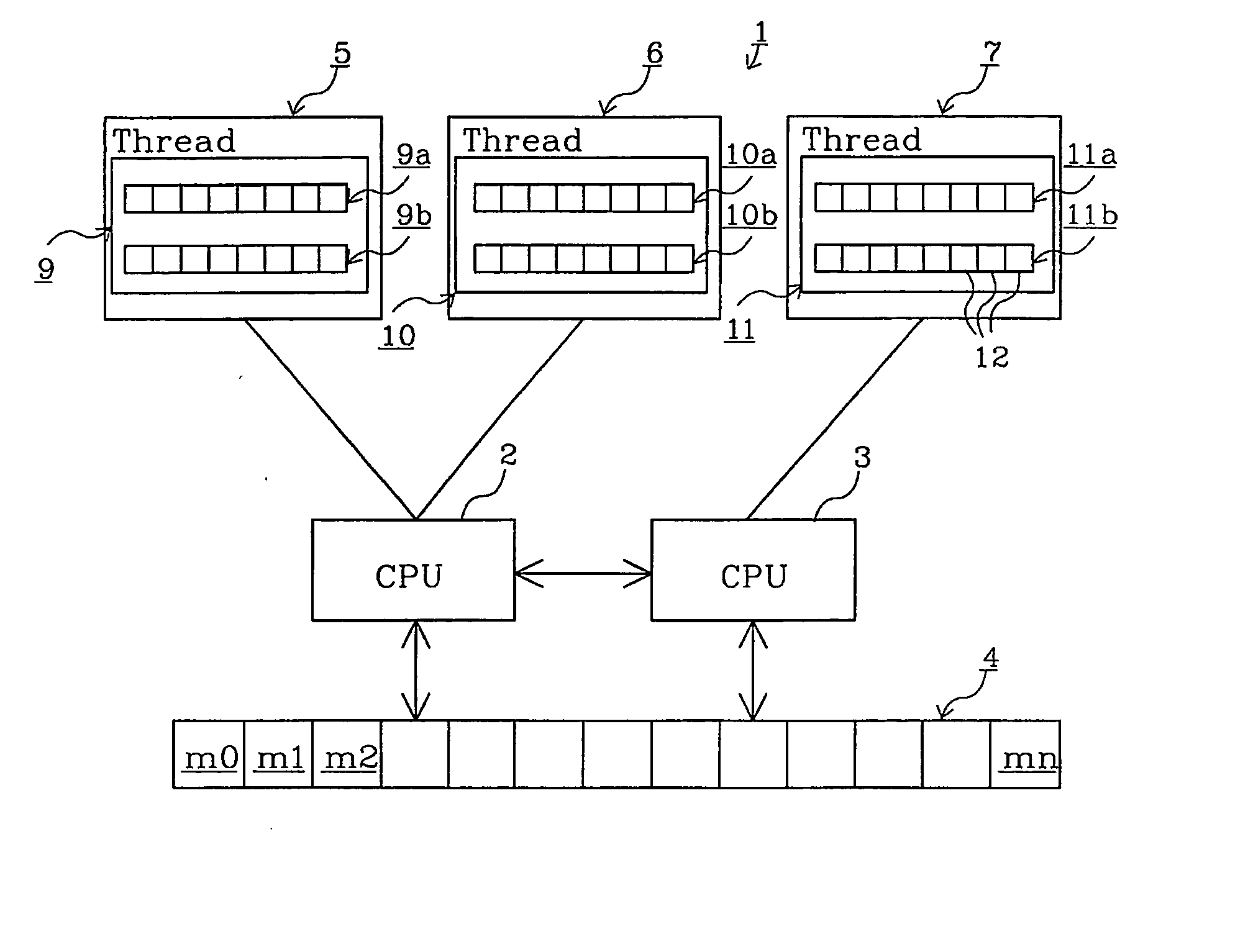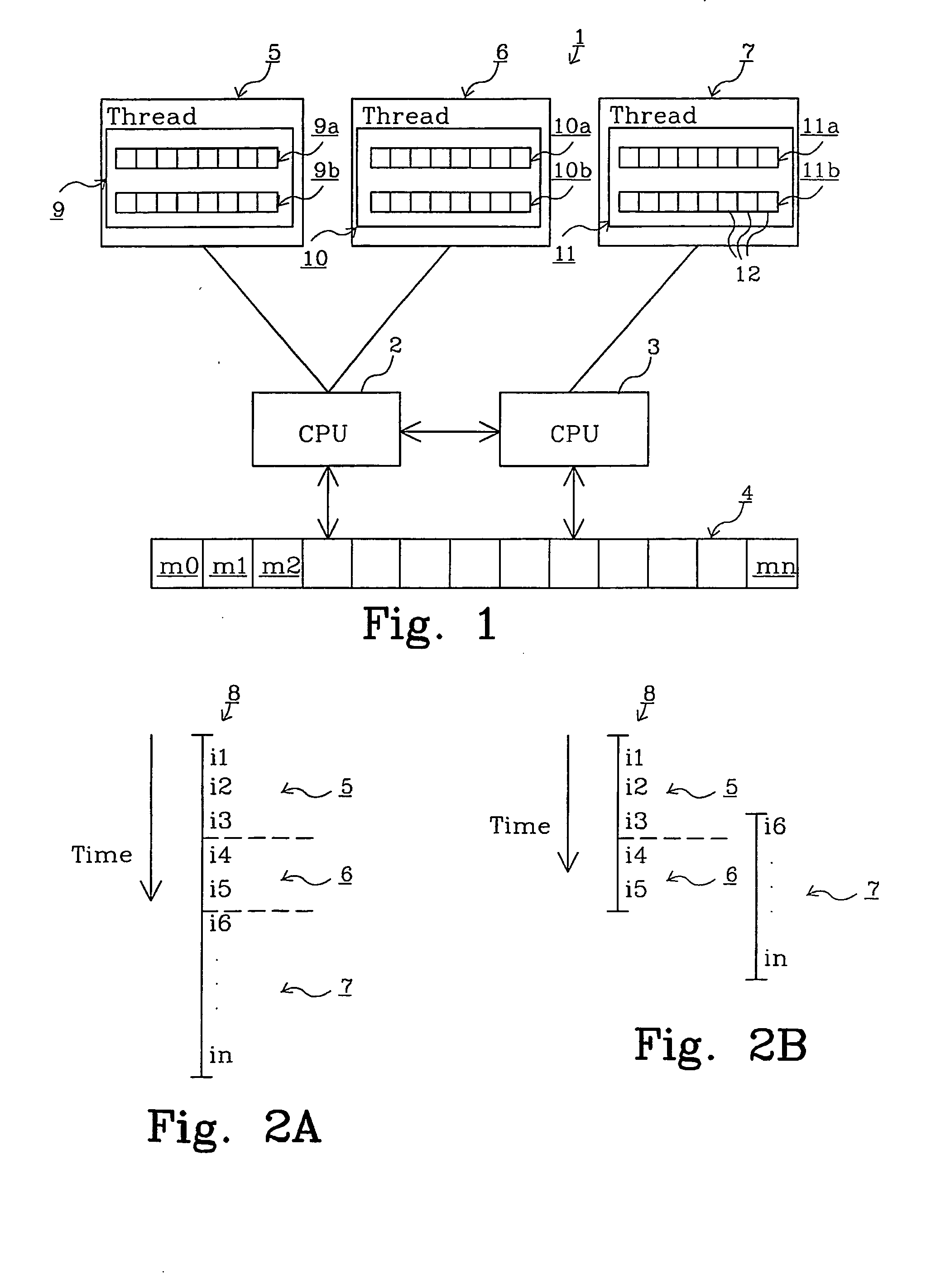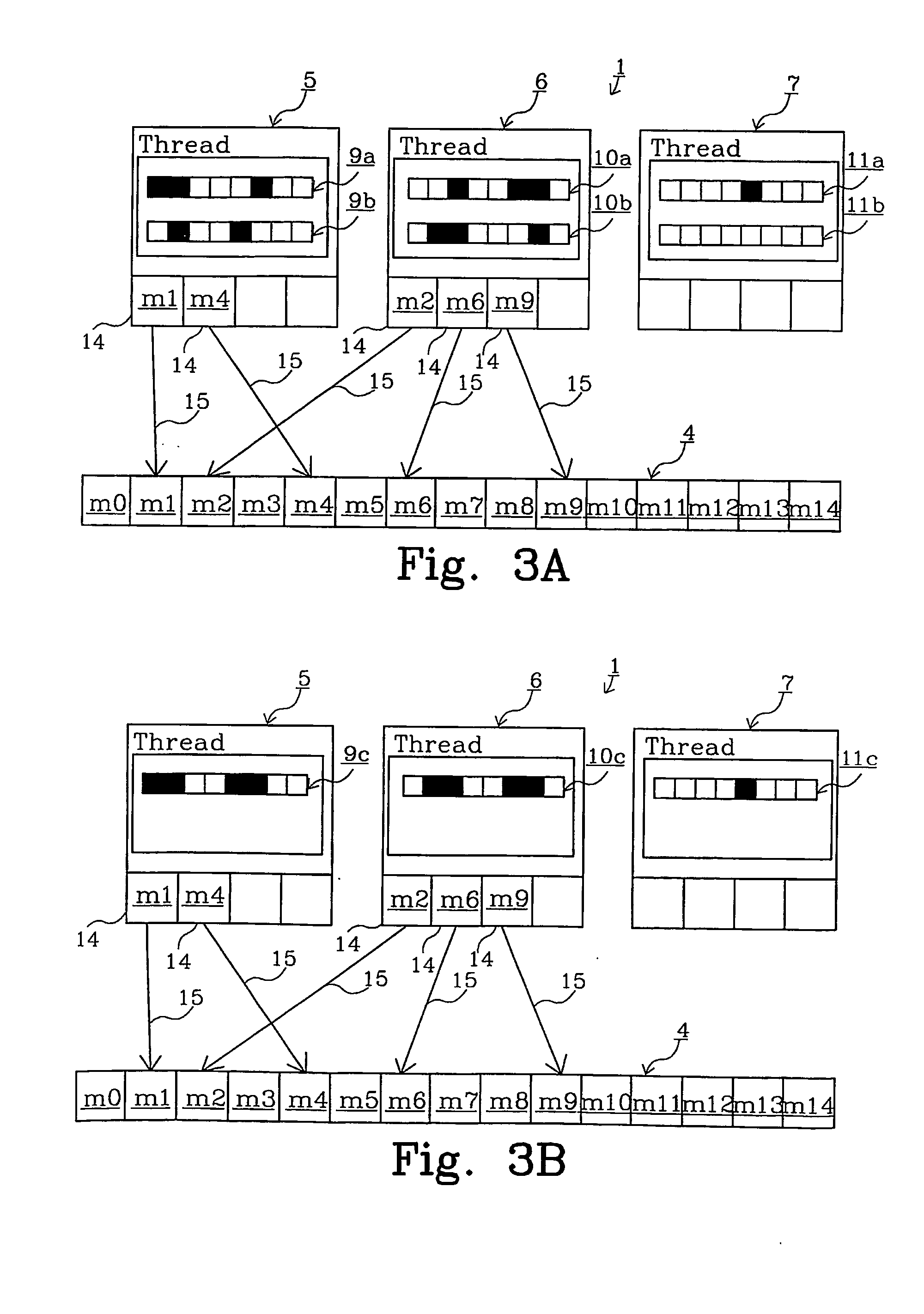Collision handling apparatus and method
a technology of collision handling and handling apparatus, which is applied in the direction of multi-programming arrangements, memory adressing/allocation/relocation, instruments, etc., can solve the problems of large execution overhead, collisions between concurrently executed threads, and collisions, etc., and achieves the reduction of execution overhead, the need for locking mechanisms is reduced, and the implementation is simple.
- Summary
- Abstract
- Description
- Claims
- Application Information
AI Technical Summary
Benefits of technology
Problems solved by technology
Method used
Image
Examples
Embodiment Construction
[0029]FIG. 1 illustrates a computer system 1 including two central processing units (CPUs) first CPU 2 and second CPU 3. The CPUs accesses a shared memory 4, divided into a number of memory elements m0, m1, m2, mn. The memory elements may for instance be equal to a cache line or may alternatively correspond to a variable or an object in a source language. FIG. 1 also shows three threads 5, 6, 7 executing on the CPUs 2, 3.
[0030] A thread can be seen as a portion of computer program code that is defined by two checkpoints, a start point and an end point. FIG. 2a shows a schematic illustration of a computer program 8 comprising a number of instructions or operations, i1, i2, . . . in. When the computer program is executed as a single thread, the normal way of processing the instructions is in the program order, i.e. from top to bottom in FIG. 2A. It is however possible, according to known techniques as mentioned above, to divide the program into multiple threads. The program 8 may for...
PUM
 Login to View More
Login to View More Abstract
Description
Claims
Application Information
 Login to View More
Login to View More - R&D
- Intellectual Property
- Life Sciences
- Materials
- Tech Scout
- Unparalleled Data Quality
- Higher Quality Content
- 60% Fewer Hallucinations
Browse by: Latest US Patents, China's latest patents, Technical Efficacy Thesaurus, Application Domain, Technology Topic, Popular Technical Reports.
© 2025 PatSnap. All rights reserved.Legal|Privacy policy|Modern Slavery Act Transparency Statement|Sitemap|About US| Contact US: help@patsnap.com



